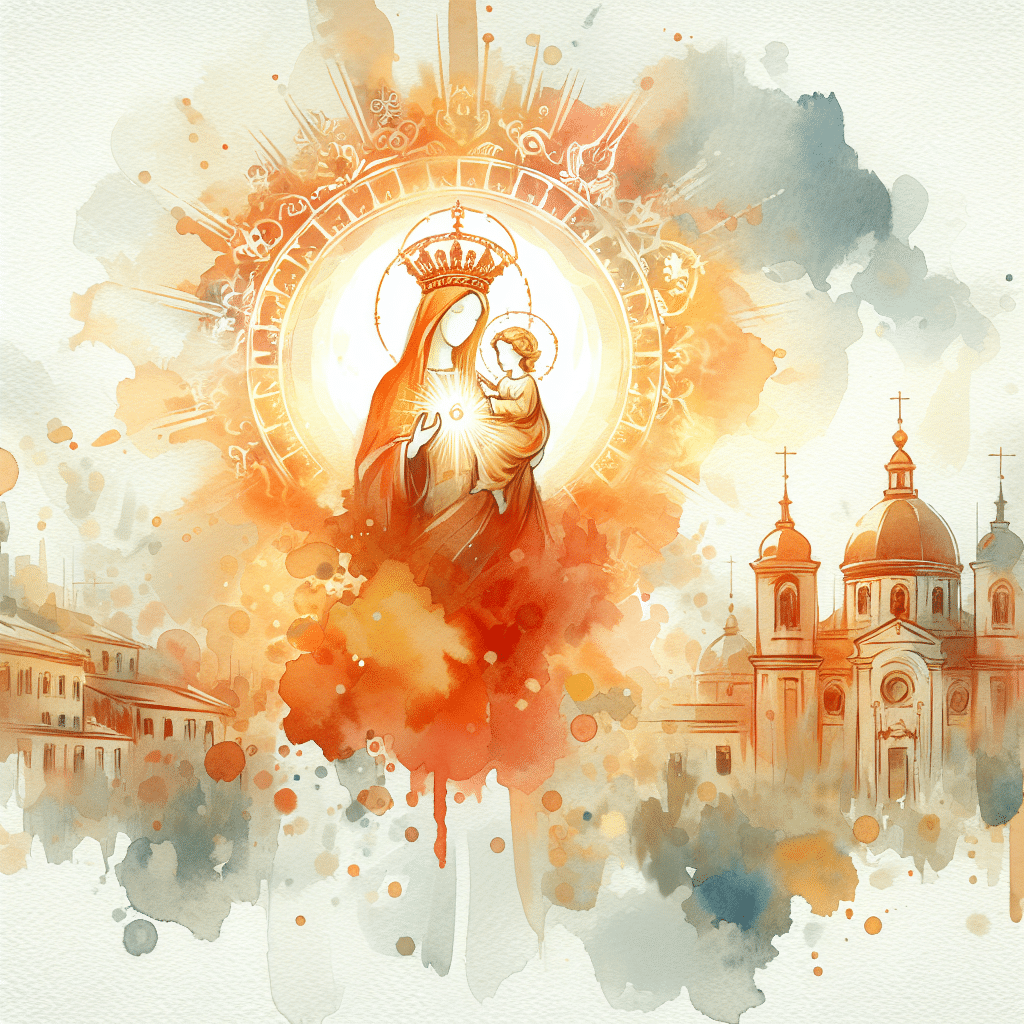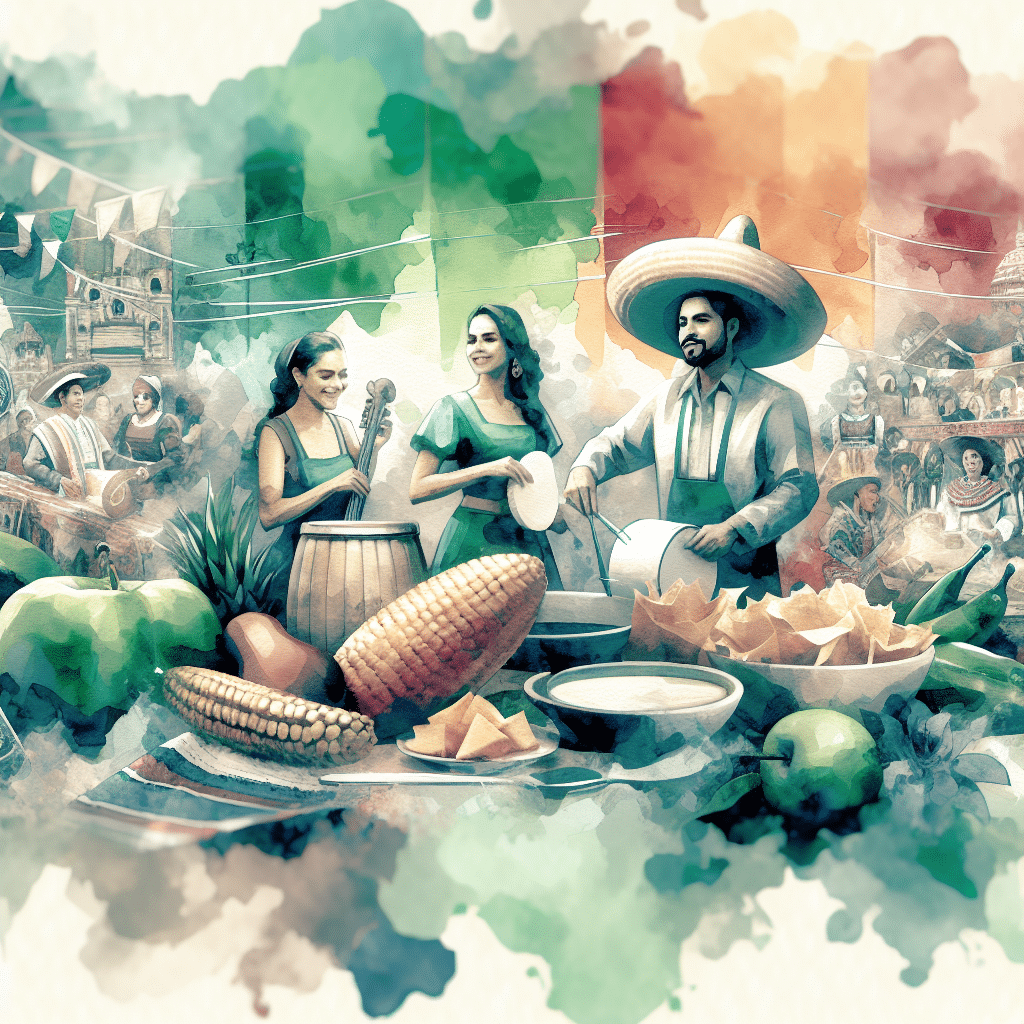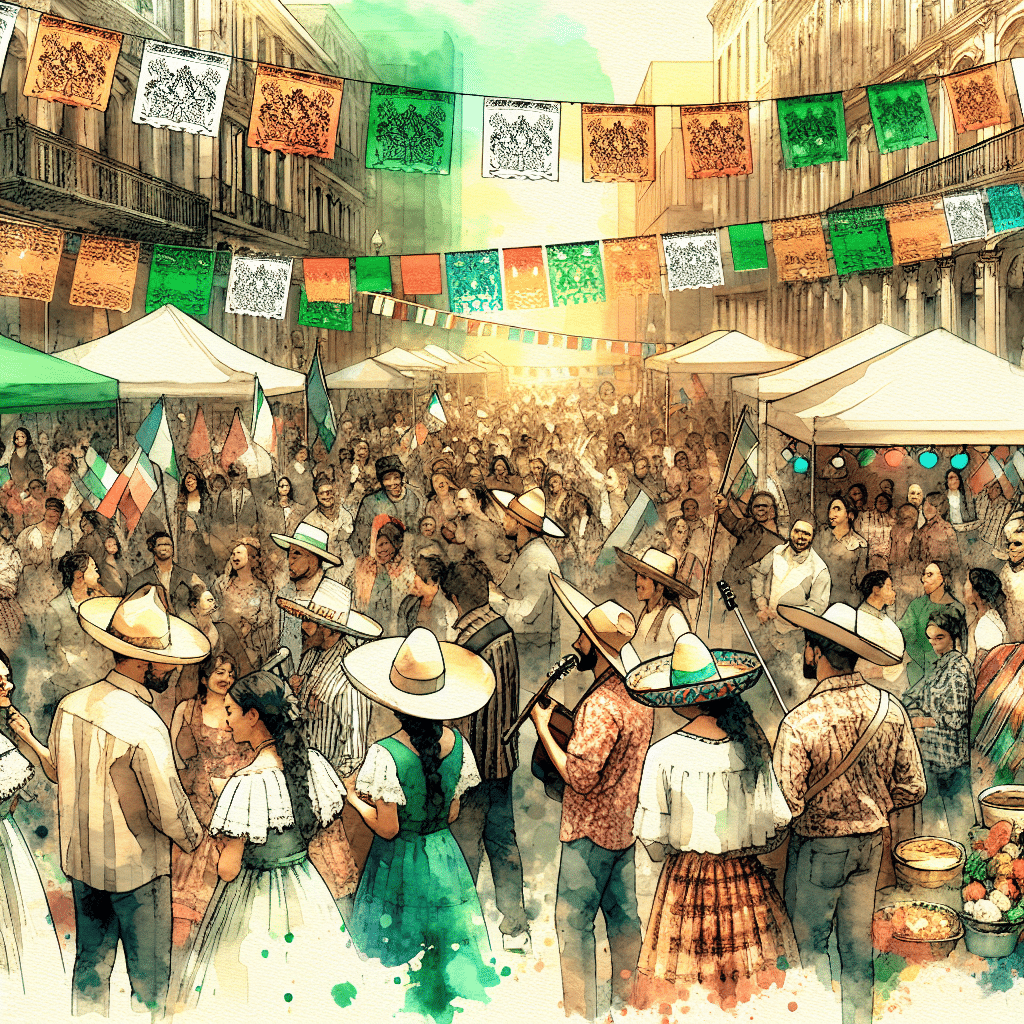
Feast of the Assumption: Celebrating Mary’s Ascension
Feast of the Assumption
The Feast of the Assumption is a big deal in Catholic tradition, especially for Latino communities, where it’s celebrated with a mix of deep faith and lively cultural traditions.
Origins and Traditions
The roots of the Feast of the Assumption go way back to early Christianity. It started as the Feast of the Dormition in the East and made its way to the West by the 7th century, getting renamed to the Assumption by the 9th century.
This feast marks the day when the Virgin Mary was taken up to heaven, body and soul, at the end of her life. Although it wasn’t officially defined until the mid-20th century, the belief in her assumption was already a common tradition, deeply embedded in the writings and thoughts of saints over the centuries (Catholic News Agency).
In Latino communities, this day is celebrated with colorful processions, fancy decorations, and joyful gatherings. People come together to honor Mary’s ascension with various traditional practices, from attending mass to joining in community feasts. These celebrations are not just about religion but also about cultural pride, blending faith with the rich traditions of Latino heritage. For more on how this day is celebrated in different regions, check out our section on festivals in Latin America.
Dogma of the Assumption
The dogma of the Assumption of Mary was officially declared by Pope Pius XII in 1950. In the apostolic constitution Munificentissimus Deus, he stated that Mary, after finishing her earthly life, was taken up body and soul into heavenly glory (Catholic News Agency). This declaration was made ex-cathedra, meaning it’s considered infallible and a must-believe for Catholics.
| Year | Event |
|---|---|
| Early centuries | Belief in Mary’s assumption begins to take root |
| 7th century | Feast of the Dormition arrives in the West |
| 9th century | Feast renamed to Assumption in some liturgical calendars |
| 1950 | Pope Pius XII officially defines the dogma |
Even with the official definition, there’s still some theological debate. The Church teaches that Mary might have died a natural death before her assumption, but it hasn’t settled the matter definitively, leaving room for discussion (Catholic.com).
The Feast of the Assumption is celebrated on August 15th, making it a big day for Catholics worldwide. Eastern Orthodox and Eastern Catholics celebrate the Dormition of the Mother of God on the same date, often with a 14-day fasting period. This day is marked as a Holy Day of Obligation, meaning the faithful need to attend mass and reflect on Mary’s glorious assumption.
For more about the significance of this feast day and its religious implications, check out our articles on Hispanic cultural events and Virgin Mary celebrations.
The Feast of the Assumption is not just a religious observance but also a celebration of cultural heritage, blending faith, traditions, and community spirit.
Why the Assumption Matters
The Feast of the Assumption, celebrated on August 15, is a big deal in the Catholic faith. It marks the day the Virgin Mary was taken up to heaven, body and soul, at the end of her life. Let’s break down why this day is so special and what it means for believers.
What Catholics Believe
The idea of Mary’s Assumption has been around since the early days of the Church. Catholics believe that when Mary’s life on earth ended, God took her up to heaven, body and soul. This belief is a key part of Catholic teachings and shows how important Mary is in the faith.
In 1950, Pope Pius XII made it official. He declared this belief as dogma in a document called Munificentissimus Deus. This means that Mary, after finishing her life on earth, was taken up to heaven by God’s grace (Catholic News Agency). The Church emphasizes that Mary didn’t go to heaven by her own power but was lifted up by God.
This dogma means that Mary now enjoys a glorified body and soul in heaven, just like her son, Jesus. The Feast of the Assumption reminds Catholics that humans are meant to be with God forever (Holy Rosary Church).
| Key Points | Details |
|---|---|
| Dogma Declared | 1950 by Pope Pius XII |
| Document | Munificentissimus Deus |
| Importance | Mary’s assumption into heaven, body and soul |
| Celebration Date | August 15 |
Celebrating Mary’s Assumption
Mary’s Assumption isn’t just a theological idea; it’s a celebration of her special role in salvation history. The Feast of the Assumption marks the day Mary was taken into heaven at the end of her life. This belief has been around for over a thousand years and was officially declared as dogma by Pope Pius XII in 1950 (Busted Halo).
On August 15, Catholics celebrate this Holy Day, which honors Mary being taken into Heaven. It’s a time to celebrate life, faith, and family, often with a candlelight procession to honor Mary.
The Church teaches that Mary was taken up to heaven, body and soul, after her life on earth. But it hasn’t decided for sure whether she died before this happened, leaving room for discussion (Catholic.com).
For many in the Latino community, the Feast of the Assumption is more than just a religious event. It’s also a cultural celebration that mixes faith with rich traditions. To see how this day is celebrated around the world, check out assumption day celebration.
The Feast of the Assumption is a key part of catholic feast days, showing the deep belief in the grace given to Mary. It connects faith and tradition, capturing the spiritual and cultural heart of the Latino community. For more on latino religious festivals and traditional latino celebrations, explore our related content.
Feast Day Celebrations
The Feast of the Assumption is a lively mix of faith, tradition, and a bit of pizzazz. Let’s jump into the fun and see how this Holy Day brings joy to so many.
Holy Day of Obligation
The Assumption is a Holy Day of Obligation for Catholics, meaning Mass attendance isn’t optional—it’s a must. Parishes go all out, offering vigil Masses the night before and several services on the day itself. It’s a time to show love and devotion to the Blessed Mother and honor her Son.
| Country | Public Holiday |
|---|---|
| Austria | Yes |
| Belgium | Yes |
| Chile | Yes |
| France | Yes |
| Italy | Yes |
| United States | No |
Data courtesy of Catholic News Agency
Processions and Parades
When it comes to processions and parades, the Feast of the Assumption pulls out all the stops. From small, quiet gatherings to huge, lively parades, cities worldwide celebrate Our Lady with enthusiasm.
In many places, the celebrations are nothing short of amazing. Imagine colorful processions, lively performances, grand pageants, and even fireworks lighting up the sky (Boston Public Library). Each community adds its own special touch, making the festivities a true reflection of local culture and devotion.
Want to join in the fun? Why not organize your own procession? Grab a picture, icon, or statue of the Blessed Virgin, and plan a route. It’s a beautiful way to honor Mary and bring a piece of this grand celebration to your neighborhood.
For more insights into traditional Latino celebrations and Virgin Mary celebrations, check out our other articles.
Traditional Practices
The Feast of the Assumption, celebrated on August 15th, is a vibrant celebration in Latino communities, packed with traditions that showcase their rich cultural heritage. From blessing the summer harvest to creating Mary gardens, these customs bring a unique charm to the festivities.
Blessing the Summer Harvest
For many Latino families, the Feast of the Assumption means blessing the summer harvest. This involves bringing the first fruits of the season—like herbs, tomatoes, and summer squash—to be blessed. These fruits symbolize Mary as the first believer in Jesus to experience the promised resurrection (Busted Halo).
| Harvest Items | Symbolism |
|---|---|
| Herbs | Healing and protection |
| Tomatoes | Abundance and prosperity |
| Summer Squash | Growth and fertility |
This tradition not only honors Mary but also gives thanks for the season’s bounty, making it a joyful and meaningful part of the celebration.
Mary Gardens and Symbolism
Another delightful custom during the Feast of the Assumption is creating Mary gardens. These gardens are filled with herbs and flowers that hold special significance. Planting a Mary garden is a symbolic way to honor the Virgin Mary, often referred to as the first fruit of the promised resurrection (Busted Halo).
| Plant | Symbolism |
|---|---|
| Roses | Love and purity |
| Lavender | Devotion and calm |
| Marigolds | Grief and remembrance |
Creating a Mary garden can be a fun and reflective activity, perfect for families or individuals looking to connect with their faith and heritage. It’s also a lovely way to add a touch of natural beauty to the celebration.
For more on how these practices fit into the larger context of Latino religious festivals, check out our detailed guides. And if you’re interested in the broader scope of Hispanic cultural events, we have plenty of resources to explore. Celebrate the Feast of the Assumption with these time-honored traditions and embrace the rich tapestry of Latino heritage.
Commemorative Meals
Feasting is the heart of the Feast of the Assumption, a day where folks come together to celebrate with a spread that honors both tradition and flavor.
Special Recipes
Whether you’re throwing together a casual picnic or hosting a fancy dinner, the trick is to use fresh summer produce and herbs. Here are a few recipes to make your Assumption Day feast extra special:
Assumption Salad
A light, refreshing salad featuring summer’s best:
Ingredients:
2 cups mixed greens
1 cup cherry tomatoes, halved
1 cup summer squash, thinly sliced
1/2 cup fresh herbs (basil, parsley, mint)
1/4 cup feta cheese, crumbled
2 tbsp olive oil
1 tbsp balsamic vinegar
Salt and pepper to taste
Instructions:
- Toss the greens, tomatoes, squash, and herbs in a large bowl.
- Drizzle with olive oil and balsamic vinegar.
- Season with salt and pepper.
- Top with crumbled feta cheese.
Sky-High Cloud Dessert
A fun dessert that looks like fluffy clouds, perfect for the occasion:
Ingredients:
1 package of ladyfingers
2 cups whipped cream
1 cup fresh berries (blueberries, strawberries, raspberries)
1/4 cup powdered sugar
Instructions:
- Layer ladyfingers at the bottom of a serving dish.
- Spread a layer of whipped cream over the ladyfingers.
- Sprinkle fresh berries on top.
- Repeat layers, ending with a layer of whipped cream.
- Dust with powdered sugar before serving.
Festive Meal Ideas
Using the summer harvest in your meal not only respects tradition but also brings fresh, vibrant flavors to your table. Here are some festive meal ideas to consider:
| Dish | Ingredients | Description |
|---|---|---|
| Grilled Herb Chicken | Chicken breasts, fresh herbs (rosemary, thyme, oregano), olive oil, garlic | Marinate chicken breasts with herbs, olive oil, and garlic, then grill until cooked through. |
| Summer Vegetable Quiche | Eggs, milk, summer squash, cherry tomatoes, spinach, cheese | A savory quiche packed with summer vegetables and baked to golden perfection. |
| Herbed Rice Pilaf | Rice, vegetable broth, fresh herbs (parsley, cilantro), onions, garlic | Cook rice in vegetable broth with sautéed onions, garlic, and a mix of fresh herbs. |
Feasting is central to this celebration, blending culinary delight with cultural heritage. From the simple elegance of a picnic to the grandeur of a formal dinner, the Feast of the Assumption is a time to gather, enjoy, and honor tradition. For more on latino heritage festivals and traditional latino celebrations, check out our other articles.
Worldwide Celebrations
The Feast of the Assumption isn’t just another holiday. It’s a global fiesta that brings people together in vibrant celebrations. Let’s see how this special day is celebrated around the world.
Processions in Different Cities
From the streets of Rome to the plazas of Latin America, processions are the heart and soul of the Feast of the Assumption. These processions can range from small and solemn to large and boisterous, reflecting the love and celebration of Our Lady in different communities (Busted Halo).
| City | Country | Type of Procession |
|---|---|---|
| Rome | Italy | Grand, traditional |
| Guatemala City | Guatemala | Colorful, festive |
| Paris | France | Solemn, elegant |
| Seville | Spain | Boisterous, vibrant |
| Santiago | Chile | Spirited, lively |
Many cities host these lively parades that are a sight to behold. Rome takes the cake with its grand and traditional processions, while Guatemala City turns the streets into a colorful carnival. In Paris, the procession is more solemn and elegant, while Seville’s boisterous and vibrant celebration is a true spectacle (Boston Public Library).
For those who can’t make it to these grand events, organizing a local procession with an icon or statue of the Blessed Virgin is a beautiful way to honor the day. Check out our guide on assumption day celebration for more tips.
Global Festivities
Assumption Day isn’t just about processions; it’s a full-blown party in many parts of the world. Each region adds its unique touch to the festivities, making it a truly global celebration.
| Country | Festivity Highlights | Public Holiday |
|---|---|---|
| Austria | Colorful parades, performances | Yes |
| Belgium | Pageants, fireworks | Yes |
| Chile | Traditional dances, music | Yes |
| France | Fireworks, local fairs | Yes |
| USA | Community events, church services | No |
Across Europe and South America, countries like Austria, Belgium, Chile, and France treat Assumption Day as a public holiday, complete with parades, performances, and fireworks (Boston Public Library). In the United States, while not a public holiday, communities still come together for church services and local events.
These celebrations often include traditional dances, music, and even local fairs. In some places, you might catch a fireworks show that rivals the Fourth of July. Different regions have their unique ways of marking the occasion, making it a day filled with joy and community spirit.
For more on how this day is celebrated in Latin America, check out our article on festivals in Latin America. And if you’re curious about other hispanic cultural events, we’ve got you covered.
The Feast of the Assumption is more than a religious observance; it’s a cultural phenomenon that unites people worldwide in joyous celebration. Whether you’re in the bustling streets of Rome or a small town in the USA, this day is a testament to the enduring significance of Mary’s glorious assumption.
Artistic Depictions
Art has always been a big deal when it comes to celebrating the Feast of the Assumption. From grand cathedrals to local churches, paintings and sculptures of the Virgin Mary steal the show, capturing the awe and reverence of this holy day. Let’s jump into the world of masterpieces and see how artists have immortalized Mary’s glorious ascent.
Artworks of the Assumption
Artistic depictions of the Assumption of Mary are as varied as they are stunning. Over the centuries, many famous Western artists have put their spin on this divine event, each bringing a unique perspective.
| Artist | Artwork | Year |
|---|---|---|
| Peter Paul Rubens | Assumption of the Virgin Mary | 1626 |
| Duccio di Buoninsegna | Maestà | 1308-1311 |
| Leonardo da Vinci | The Virgin and Child with Saint Anne | 1503 |
| Michelangelo | The Last Judgment (Virgin Mary depicted) | 1536-1541 |
| Raphael | Sistine Madonna | 1512 |
| Giovanni Bellini | Madonna of the Meadow | 1505 |
| Caravaggio | Death of the Virgin | 1606 |
These masterpieces have not only inspired the faithful but have also become cultural treasures, celebrated in museums and galleries worldwide. For more on how these artworks are showcased during Virgin Mary celebrations, click here.
Artists’ Interpretations
Each artist has brought their own flair to the Assumption of Mary, blending theological significance with personal style. Here’s a closer look at some of the most iconic interpretations:
Peter Paul Rubens: Known for his dynamic compositions and vibrant colors, Rubens’ “Assumption of the Virgin Mary” (1626) is a visual feast. The swirling clouds and ascending angels create a sense of movement, embodying the divine moment of Mary’s ascent (Boston Public Library).
Duccio di Buoninsegna: Duccio’s “Maestà” (1308-1311) offers a more serene and contemplative take. The intricate details and gold leaf background reflect the heavenly glory surrounding Mary.
Leonardo da Vinci: While not a direct Assumption piece, da Vinci’s “The Virgin and Child with Saint Anne” (1503) captures the tender relationship between Mary and her family, emphasizing her purity and divine role.
Michelangelo: In “The Last Judgment” (1536-1541), Michelangelo includes the Virgin Mary among the saved, highlighting her importance in the celestial hierarchy. The fresco’s dramatic style and powerful figures are quintessentially Michelangelo.
Raphael: The “Sistine Madonna” (1512) portrays Mary with an ethereal grace, holding the Christ Child. The softness of the figures and the serene expressions make this painting a beloved masterpiece.
Giovanni Bellini: Bellini’s “Madonna of the Meadow” (1505) showcases Mary amidst a serene landscape, emphasizing her connection to nature and divinity.
Caravaggio: Known for his dramatic use of light and shadow, Caravaggio’s “Death of the Virgin” (1606) presents a raw and humanized portrayal of Mary, evoking deep emotions.
These artistic interpretations not only celebrate the Assumption but also reflect the cultural and historical contexts in which they were created. For more on how these artworks influence Latin American holiday traditions, visit here.
For those interested in exploring more about the art of the Virgin Mary, recommended reads include “Her Face: Images Of The Virgin Mary In Art,” “The Life & Pontificate of Pope Pius XII,” and “Catechism of the Catholic Church” (Boston Public Library).
Literary Recommendations
Want to dive into the rich world of Catholicism and get a grip on the Feast of the Assumption? We’ve got some top-notch book picks that’ll make you feel like a theology whiz, even while you’re binging your favorite series.
Books on Catholicism
Whether you’re a devout Catholic or just curious about this vibrant faith, these books offer a solid look into Catholic doctrine, history, and art.
- “Her Face: Images Of The Virgin Mary In Art”
- Explore the artistic depictions of the Virgin Mary and see how her image has been celebrated through centuries of art. Perfect for art lovers who want to blend spiritual and aesthetic appreciation.
- “The Life & Pontificate of Pope Pius XII”
- Get into the life of Pope Pius XII, the man who declared the Assumption an official dogma in 1950. Learn about his influence on the Catholic Church and his role in modern Catholic history.
- “Catechism of the Catholic Church”
- The go-to guide for understanding Catholic beliefs and practices. This hefty book covers everything from the sacraments to the saints and is a must-read for anyone serious about understanding Catholicism.
Understanding the Assumption
For those who want to get to the heart of the Feast of the Assumption, these books will provide a detailed and nuanced understanding of this celebration.
- “Munificentissimus Deus”
- The official document by Pope Pius XII that proclaimed the Assumption of Mary as dogma. A fascinating read for history buffs and theology enthusiasts alike.
- “Understanding the Assumption: A Guide to Catholic Teaching on Mary”
- An accessible book that breaks down the complex theological concepts surrounding the Assumption. Great for anyone looking for a straightforward explanation without too much ecclesiastical jargon.
- “Mary: The Church at the Source” by Joseph Cardinal Ratzinger and Hans Urs von Balthasar
- Offers deep insights into Mary’s role in the Church and her Assumption. Perfect for those who want to dive into theological reflections.
| Book Title | Author | Focus |
|---|---|---|
| Her Face: Images Of The Virgin Mary In Art | Marion Wheeler | Artistic Depictions |
| The Life & Pontificate of Pope Pius XII | Frank J. Coppa | Historical Account |
| Catechism of the Catholic Church | U.S. Catholic Church | Catholic Doctrine |
| Munificentissimus Deus | Pope Pius XII | Official Dogma |
| Understanding the Assumption | Various | Theological Guide |
| Mary: The Church at the Source | Joseph Cardinal Ratzinger, Hans Urs von Balthasar | Theological Reflections |
These books not only offer insights into the Feast of the Assumption but also enrich your understanding of broader Catholic feast days and Virgin Mary celebrations. Whether you’re looking to expand your knowledge or find a meaningful gift for a friend, these literary recommendations are a great place to start.




